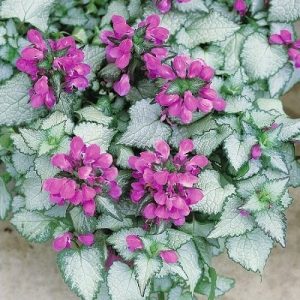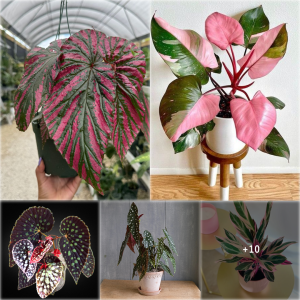If you have any houseplant collectors in your life, or happen to be one yourself, you will undoubtedly know all about the famous pothos, and the different pothos varieties. You’ve probably seen one cascading down a bookshelf or decorating the top of a fridge on your Pinterest feed.
This plant features high on the list of must-have indoor plants, especially for beginners, due to its carefree nature and long trailing vines that make anyone look like a pro plant parent. Outside of indoor cacti, there are fewer plants more popular indoors than the Pothos. Essentially, once you’ve discovered the wonders of this plant, there is no going back.
Once you’ve been seduced by this stunning plant, you may find yourself itching to buy another, and another. Luckily for collectors, there are several cultivars sporting different leaf shapes and patterns. Although they look different, they are no less easy to care for, giving their owners little to no trouble.
When Is a Pothos a Pothos?
Before diving into cultivars, it’s important to understand what makes a pothos, a pothos.
As is the trouble with many common plant names, there is some confusion about which plants fall under the name, and which have been assigned it incorrectly. Knowing what kind of plant you’re dealing with is essential in plant care (and bragging rights), so how can you tell which plant is a real pothos and which isn’t?
True pothos fall under the scientific name Epipremnum spp. There are various Epipremnum species, like E. pinnatum, but the species most commonly sporting the pothos name is Epipremnum aureum. The various versions of pothos you see in nurseries are typically cultivars of this Epipremnum species.
The confusion stems from plants that have been given the common name ‘pothos’ despite having a different scientific name, with a bit of horticultural indecisiveness mixed in. The most common mix up is with the Silver Satin Pothos, which looks remarkably similar to some true pothos cultivars but falls under the genus Scindapsus.
To make matters worse, Epipremnum aureum once fell under the Scindapsus genus, but was later changed by horticulturalists to better define the species. The only significant difference between the two plants is that Scindapsus produces one seed while Epipremnums produce many. Such a small distinction to cause chaos over, I know.
Another plant often mislabeled as a pothos is Philodendron hederaceum, also known as the heartleaf philodendron. The only connection between these two plants is looks and growth habit, but with a close eye and some practice, you should be able to tell the two apart quite easily.
Best Pothos Varieties
There are many varieties of Pothos. But which ones are the best for your home? Let’s take a look at our favorite Pothos plants that you need to have around your home in some way.
Golden Pothos

The Golden Pothos is the original pothos found in every nursery around the globe. Its common name is simply an extension of the scientific name (aureum is Latin for gold).
As the true Epipremnum aureum, it is an absolute must-have for any indoor gardener. It is the most commonly found and most adaptable of all the pothos plants, ideal for beginners or experienced gardeners alike.
Although it is the most common, it is certainly no less good-looking than its cultivars. The heart-shaped leaves feature splashes of creamy and golden yellow in patterns reminiscent of a Van Gogh painting. The vines grow incredibly quickly, trailing around shelves or across tables.
If planted outdoors, this climbing plant will quickly cover entire tree trunks. Under the right growing conditions and in its natural habitats, the leaves grow to a massive three feet and develop slits similar to the ever-popular Monstera deliciousa. In fact, they grow so well that they are considered invasive in some areas, particularly in Florida.
Neon Pothos

Similar in appearance to the Golden Pothos is the Neon Pothos. However, this cultivar sports bright, lime-colored leaves that appear almost luminescent. While it lacks the variegation that other pothos cultivars are famous for, its monochromatic green look makes it stand out amongst the crowd.
As new leaves emerge, they are a captivating bright color, which darkens slightly over time. To maintain this impressive color, keep your neon pothos in bright light. The less sunlight this cultivar receives, the duller its leaves will appear.
Neon Pothos is ideal for corners of your home that need a bit of brightening. Bathrooms and kitchens are ideal, provided they receive enough light to keep this happy plant glowing green. Keep in mind that some Neon pothos may have more yellowish-colored leaves. Don’t mistake yellow pothos leaves for this plant being an unhealthy variety.
Manjula Pothos

For a completely different leaf shape, look no further than the Manjula Pothos. This cultivar is a combination of other popular variegated varieties, producing deep green leaves spotted with white and pale olive. It’s sometimes confused for the Global Green pothos, but they are different plants.
The leaves of the Manjula Pothos are slightly broader and feature waved edges that distinguish it from any other pothos on the market. It is certainly a statement foliage plant with each leaf sporting a completely different pattern of variegation. The combinations of white, green and yellow are difficult to find on other pothos, let alone other houseplants.
To preserve this special variegation, give your Manjula Pothos plenty of bright light. Areas with less green lack chlorophyll, meaning the plant needs more light than usual to get the energy it needs to survive. If areas of the leaves previously covered in white variegated spots begin to disappear, that is a sign your plant needs more sunlight.
Marble Queen Pothos

A parent of Manjula, the Marble Queen Pothos is one of the most popular variegated varieties and a sought-after collector’s item. As one of the earliest cultivars, it is not difficult to find, or difficult to care for.
The variegation on Marble Queen is similar in pattern to the Golden Pothos. However, its point of difference is the variegation color. This cultivar is covered in bright white spots that blend seamlessly into the green to form a quilt of color. True to the name, the leaves do resemble marbling, especially in highly variegated plants.
The color may differ depending on lighting conditions, giving you an ever-changing plant guaranteed to dazzle. Some leaves may be almost completely white, others completely green, or a healthy mix of the two.
This cultivar is undoubtedly the original ‘Queen’ of the variegated pothos plants.
Cebu Blue Pothos

While part of the same genus, the Cebu Blue is the only cultivar on this list under the species E. pinnatum. You’ll certainly be able to tell, as its leaf color and shape differs greatly from its cousin Epipremnum aureum.
Still growing along trailing vines as all members of this genus do, the Cebu Blue Pothos separates itself from the pack with narrow, pointed leaves in the shape of arrows. Moving away from the typical bright green of the genus, Cebu Blue has a bluish hue over dusty dark green leaves.
Not only do they have a blue tint, but their texture also appears shiny – almost metallic. It is unlike any other pothos, or any other indoor plant for that matter.
If you manage to get your hands on one of these sought-after plants, keep it in a medium-light area to preserve its color and prevent damage to the leaves. Cebu Blue is a fast-growing cultivar, rewarding you with large, impressive leaves if well looked after.
Jade Pothos

If the monochromatic look is your style, but you tend to shy away from the bright colors of the ‘Neon’ cultivar, the Jade Pothos is your answer. It has solid dark green leaves with a shiny texture similar to other tropical foliage plants grown indoors.
With leaves filled with dark green chlorophyll, Jade is one of the fastest-growing pothos plants around. Alternatively, you can place it in lower light conditions, and it may not grow as quickly, but will fare far better than any of the variegated cultivars.
This cultivar may be harder to find than its neon counterpart, but it is worth the purchase if you can get your hands on one.
Snow Queen Pothos

Lovers of variegation with one Marble Queen in their pocket already will instantly fall in love with the Snow Queen cultivar. It is the most variegated of all the plants on this list, with large white patches covering every leaf.
In certain plants, the leaves appear more white than green, with only a few speckles to indicate that the plant has any green in it at all. It’s no wonder it earned the cultivar name ‘Snow Queen’.
The only downside to this special plant is the extra care needed to keep it healthy and happy. Due to the large white variegation spots, there is far less chlorophyll in these leaves than usual. With less chlorophyll, the plant processes less sunlight and grows far slower.
If you’re looking to keep your Snow Queen for years to come, ensure you place it in a high light area (away from direct sunlight) to avoid stunting its growth.
Jessenia Pothos

On the opposite end of the variegation spectrum lies the Jessenia cultivar. Only slightly swaying from its monochromatic neighbors, Jessenia features green shades that are almost indistinguishable. The variegation pattern is therefore subtle, but no less stunning.
Some collectors have likened Jessenia to a toned-down version of its parent plant, the Golden Pothos. The lighter green shade is more muted than the golden yellow of many pothos plants. But don’t let the negative connotations of the word ‘muted’ dissuade you. This light green seamlessly blends into a darker shade, making every leaf with different variegation patterns look a slightly different color from afar.
This beauty is not easy to come by in nurseries or online. Check your local plant swops to get your hands on a cutting of one of the vines instead. It will grow happily in water until the roots have grown enough to be transplanted into its own pot.
N’Joy Pothos

The new kid on the block, the N’Joy Pothos was recently introduced to the pothos pool of plants.
Often confused for the Manjula cultivar (or the Pearls & Jade coming up next), N’Joy has large patches of white or cream variegation. However, this cultivar lacks the spotted variegation of its counterparts, typically preferring blocky, solid patterns of contrasting bright white and deep green.
It also differs in size. This cultivar is far more compact, with smaller leaves in dense clusters. It may not grow as large or as quickly, but the standout foliage makes a statement despite its smaller stature. To preserve its gorgeous color, keep the plant in bright, indirect light. The higher the light, the more pronounced the variegation will be.
Pearls & Jade Pothos

Finally, we come to the cultivar that has it all – Pearls & Jade. Its white, cream and green variegation comes spotted and in solid blocks, making each leaf on the plant look completely unique.
And speaking of unique, Pearls & Jade is one of the few cultivars with a white variegation pattern largely sticking to the edges of the leaves, framing the spotted green center. The white also has sections of silvery hues absent from the other cultivars on this list.
Like N’Joy, this compact plant has smaller leaves and a slower growth rate. They are both sports of the Marble Queen cultivar and N’Joy is often mistaken for Pearls & Jade, or vice versa. No matter which you find, you’ll have a stand-out plant with patterns unlike any other houseplant in your home.
Hawaiian Pothos

Remarkably similar to the Golden Pothos in color and variegation pattern, what sets this cultivar apart is its size. Hawaiian Pothos leaves grow far larger indoors than any other type, making a standout feature.
Give this plant bright indirect light, and it will grow even better, closely matching how pothos appears in its natural habitat.
Due to their size, Hawaiian Pothos looks best trained up a moss pole for support. Alternatively, plant in a large hanging basket for an impressive, cascading feature.
Variegated Neon Pothos

Neon Pothos is beloved for its bright color. But, for some, the uniform tone can be slightly underwhelming when compared to the wonderfully patterned pothos types out there. Luckily, the variegated Neon Pothos is here to save the day.
Along with the bright green, almost luminous yellow leaf color of the original Neon Pothos, this sport has lighter areas of yellow and creamy variegation that darken slightly as the plant ages.
As a newer cultivar, these are tougher to find and may be pricier than their genetic parent. However, considering the standout foliage, they are well worth the extra cost.
Global Green Pothos

This newer pothos on the market, recently propagated and patented in North America by Costa Farms, may be trickier to come by, but it is no less trickier to care for than other types.
Originally from Japan, Global Green is one of the most recently introduced pothos cultivars to the US. That hasn’t stopped it from quickly taking over social media feeds and stealing houseplant lovers’ hearts.
Its variegation pattern is unique in that it doesn’t feature any of the classic cream or white spots, but rather large patches of lighter green amongst a deep green-edged backdrop. Thanks to these colors, this pothos grows far quicker, filling out pots and hanging baskets with ease.
Glacier Pothos

Glacier is very similar to the beloved N’Joy in color and variegation pattern. However, while N’Joy is one of the smallest cultivars with compact leaves, Glacier reaches a slightly bigger size overall, allowing you to tell these two plants apart.
Although this plant is not difficult to care for, it is usually hard to come by. It is not classified as particularly rare, but isn’t as widely produced as some of the more popular types, leaving less available on the market overall. If you spot one, make sure you snatch it up quickly to avoid missing out.
Harlequin Pothos

The Harlequin Pothos is shrouded in mystery. With little known about where this plant came from, or if it can even be classified a distinct cultivar, there is still much to learn about this type.
However, some pothos enthusiasts insist it is a separate variety. Similar in appearance to Manjula, Harlequin has stronger white variegation with almost completely white leaves. This has led some to argue that what many label Harlequin is actually just a highly variegated Manjula, but the distinctions seem to remain consistent in the right growing conditions.
With large areas of variegation, giving that sought-after foliage look, Harlequin is not one to skip past.
Satin Pothos (Not Really a Pothos)

As is the trouble with many common plant names, there is some confusion about which plants fall under the name, and which have been assigned it incorrectly. True pothos fall under the scientific name Epipremnum spp. There are various Epipremnum species, like E. pinnatum, but the species most commonly sporting the pothos name is Epipremnum aureum. The various versions of pothos you see in nurseries are typically cultivars of this Epipremnum species.
The confusion stems from plants that have been given the common name ‘pothos’ despite having a different scientific name, with a bit of horticultural indecisiveness mixed in.
The most common mix-up is with the Silver Satin Pothos, which looks remarkably similar to some true pothos cultivars but falls under the genus Scindapsus. Although it is not a true pothos, these plants were previously part of the same Scindapsus genus and so are still closely related.
Another plant often mislabeled as a pothos is Philodendron hederaceum, a philodendron variety also known as the heartleaf philodendron. The only connection between these two plants is looks and growth habit, but with a close eye and some practice, you should be able to tell the two apart quite easily.
Pothos Houseplant Care
Pothos plant care is incredibly undemanding. These plants can survive in a range of conditions, tolerate a bit of neglect from forgetful owners, and continue to grow long vines with little to no maintenance.
While pothos’ prefer bright, indirect sunlight, they will still grow successfully in lower light conditions. This makes them ideal for bathrooms that typically have less sunlight coming through smaller windows. It may not grow as quickly or prolifically as plants in bright light, but it will manage.
When it comes to light, the only thing this plant doesn’t appreciate is direct sun. In their natural habits, Epipremnums snake up trees, making them very comfortable in dappled light outdoors. Keep it in a sunny room away from direct rays to best replicate these conditions and avoid leaf scorch.
Pothos plants appreciate being given time to dry out before another watering and will quickly rot in waterlogged soil. To remove the guesswork of when to water, they come with a handy indicator – once the leaves begin to curl inwards, they need a drink.
They may withstand a range of temperature and humidity conditions, but do best in high humidity spots with temperatures between 60F and 80F. Don’t feel pressured to raise the humidity artificially though, as they will do just fine in dry air as well.
Pruning and fertilizing are not a necessity, but may help you get the best out of your plant. When pruning, keep any cuttings you remove and root them in water to grow even more pothos plants. Fertilize once a season with a liquid fertilizer according to instructions.
Wherever you place your pothos plant, ensure it is out of reach of cats, dogs, and children, as it is highly toxic to people and pets. These are hardy plants, and it takes quite a bit to kill them, which makes them great for beginners.
Final Thoughts
When it comes to choosing a pothos cultivar, it’s hard to go wrong. Unless you choose a pothos that isn’t actually a pothos (but hopefully with the confusion cleared up, that won’t be a concern). If you prefer monochromatic plants, Neon or Jade are ideal. Cebu Blue caters to fans of no frills and those looking for a little color with its deep bluish-green hues.
The Golden and Jessenia Pothos have muted variegation patterns, while the standouts of Snow Queen, N’Joy and Pearls & Jade – descendent from Marble Queen – steal the show, no matter where they are placed. But, whether you find one pothos or purchase them all as many collectors have endeavored to do, they will all provide you with long-lasting trails of leaves with little to no fuss. From beginners to plant pros, pothos is a plant for every gardener.





